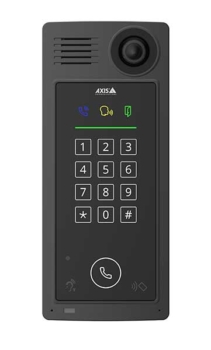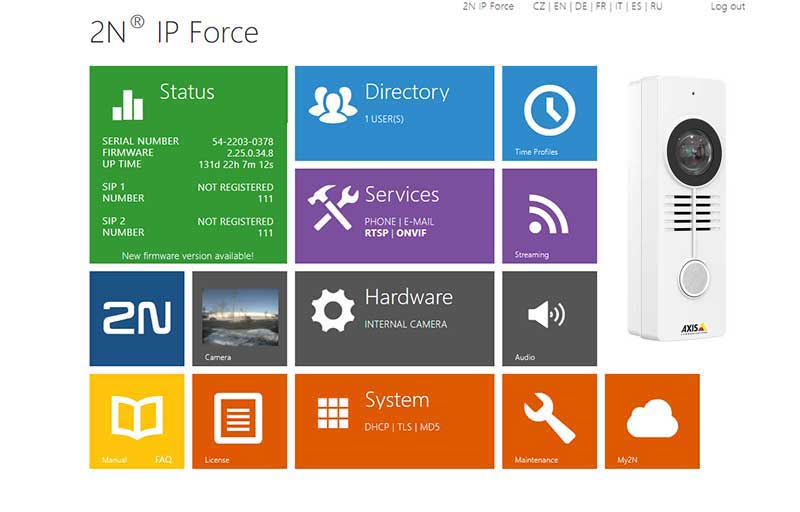Next generation intercoms have many uses and can be useful security tools.
By Neal Bellamy, IT Director at Kenton Brothers.
 Intercoms are often overlooked as a security tool. But sometimes intercoms can be even more important in the prevention of attacks, than cameras or access control. A lot of offices, schools, and manufacturing have gone to a secured building model where the front door or reception area is no longer unlocked to the public. This prevents unauthorized users from getting access to the building where they could pose a larger security risk. Sure, it’s more secure, but how do you let the public in that need to be there?
Intercoms are often overlooked as a security tool. But sometimes intercoms can be even more important in the prevention of attacks, than cameras or access control. A lot of offices, schools, and manufacturing have gone to a secured building model where the front door or reception area is no longer unlocked to the public. This prevents unauthorized users from getting access to the building where they could pose a larger security risk. Sure, it’s more secure, but how do you let the public in that need to be there?
Enter the intercom.
Intercoms aren’t new or sexy. The older generation of intercoms required fixed wires between the door station and the master station where the intercom is answered. Sometimes there are multiple doors and multiple master stations. And in almost all configurations, there’s a fixed wire between doors and answering stations.
With fixed stations, the person who answers the intercom is not at their desk so someone needs to be located where a master station is. Or if we need to add a door or a master station, usually the entire system has to be replaced. This also means that when a person’s desk or door needs to be moved, the wire needs to be extended or replaced. None of these scenarios are conducive to business.
With the ever-evolving business doors and desks need to move easily and a backup person to answer the door needs to be seamless and non-disruptive.
The re-design of the intercoms answers all these issues.
 The new generation of intercoms is modular and network-based. This means that if we can get a network wire to the door and the person who needs to answer the intercom, we’re in business. No longer does the person answering have to be next to the door, or even in the same building.
The new generation of intercoms is modular and network-based. This means that if we can get a network wire to the door and the person who needs to answer the intercom, we’re in business. No longer does the person answering have to be next to the door, or even in the same building.
If we need to add a door or a master station, we just add them to the network and program them in. Need to add a button for a new tenant? Add it on. Need to add a reader to unlock the door? Add it on. Need to see and record who is at the door through a camera? Add it on. Need to have a directory of people that can get called directly… I think you get the idea.
The possibilities are pretty large with the next generation of intercoms. Both Axis and 2N have strong lines of network-based intercoms. The newer intercoms can do everything the older generation can do.
Here are some of the newer intercom possibilities:
- Answering the intercom at another building, cell phone call or through a mobile application.
- Recording the video (up to 6MP) at the door through a video management system (VMS). By the way, this is the best facial capture placement of a camera. It is eye level and the people look right into it.
- Call one or many answering stations at the same time, then roll to another answering station if the first one doesn’t answer. There is no limit to the combinations or answering stations that can be called at the same time or tied together in a chain.
- Connect the door station and/or answering station to an existing (or hosted) IP phone system. Then the doors can call any phone number programmed into the system.
- Release the door from any answering station directly or through the access control system.
- Have a directory of people to call like an apartment of a multi-tenant commercial building. The directory can be updated through the software so labels do not have to be printed/replaced.
- Have multiple hardware buttons (up to 146) to call an answering station directly.
- Use a card, fingerprint, Bluetooth or keypad to unlock the door at the intercom.
- Have an audio induction loop for hearing impaired people.
The new generation of intercoms can adapt to any need. If you need an intercom system or need to replace your old one, let Kenton Brothers show you the possibilities!





Leave a Reply
Want to join the discussion?Feel free to contribute!